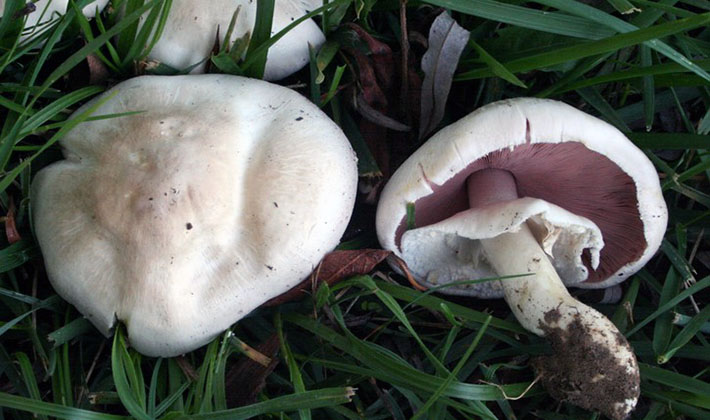Many believe that all varieties of champignons are exclusively artificially grown mushrooms, and you will not find them in the forests. However, this is a delusion: there are also types of champignons that cannot be cultivated and grow exclusively in the wild. In particular, they include coppice, sh. yellowish, w. reddish and w. pink plastic.
Unlike chanterelles and russula, champignons grow mainly in dense mixed forests with spruce. At this time, they are rarely collected due to ignorance of the species and because of the similarity with the deadly poisonous fly agaric and pale grebes. There is one common property of champignons – they first have pinkish or yellow-brown, and later brown and dark plates. There must be a ring on the leg. However, the youngest champignons have almost white plates and at this time they can be confused with deadly poisonous fly agaric. Therefore, it is not recommended to collect forest types of champignons for novice mushroom pickers.
You will learn about what popular varieties of champignon mushrooms growing in the forest look like on this page.
Woody champignon
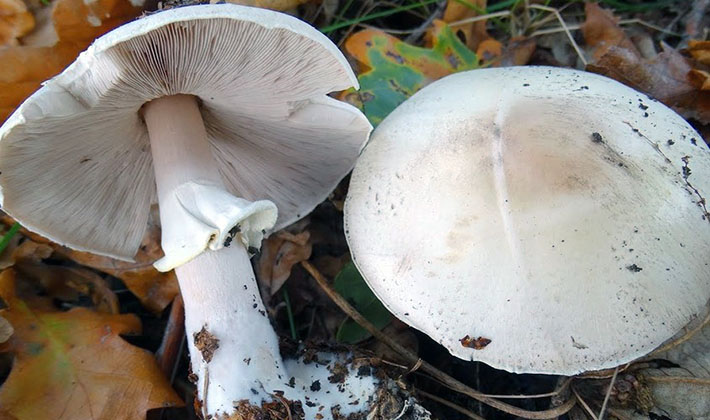
Habitats of wood mushroom (Agaricus sylvicola): deciduous and coniferous forests, on the ground, grow in groups or singly.
Season: June-September.
The cap has a diameter of 4-10 cm, at first spherical or ovoid, smooth, silky, then open-convex. The color of the cap is white or whitish-gray. When pressed, the cap acquires a yellowish-orange color.
The leg has a height of 5-9 cm, it is thin, 0,81,5 cm thick, hollow, cylindrical, slightly expanded at the base.
Look at the photo – this type of champignon on the leg has a clearly visible white ring with a yellowish coating, which can hang low, almost to the ground:
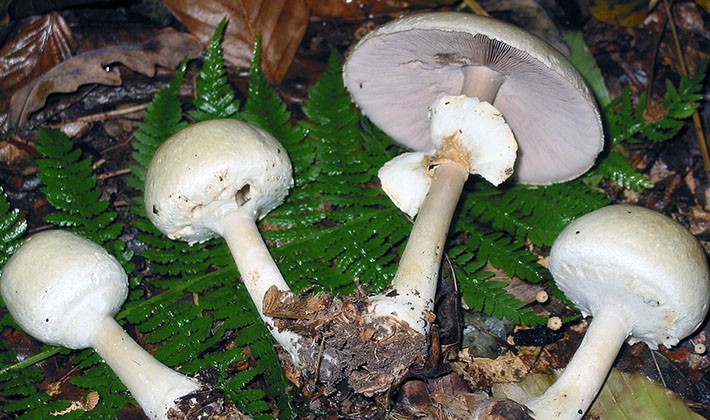
The color of the legs is heterogeneous, it is reddish on top, then white.
The pulp is thin, dense, white or creamy, has an aniseed smell and a hazelnut taste.
The plates are frequent, thin, loose, when ripe, change color from light pink to light purple and later to dark brown.
Poisonous similar species. According to the description, this type of forest champignons resembles the deadly poisonous pale grebe (Amanita phalloides), in which the plates are white and it never changes color, while in champignons they darken; and they have a thickening at the base and a volva, they do not change color at a break, but in champignons the flesh will change color.
Edible, 2th category.
Cooking methods: soups are boiled, fried, marinated, sauces are made, salted, frozen.
Champignon yellowskin
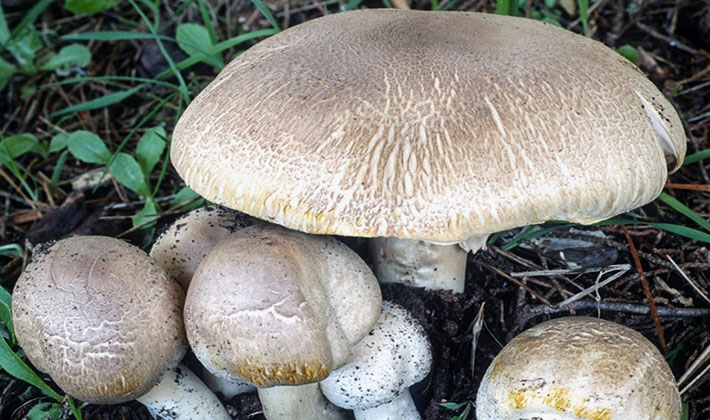
Yellow-skinned mushroom (Agaricus xanthodermus) habitats: among grass, on humus-rich soil, in gardens, parks, pastures, near dwellings.
Season: May-October.
The cap is 6-15 cm in diameter, at first spherical with edges turned inward, later flat-round and then procumbent, often with a convex center, silky or finely scaly. The color of the cap is white at first, later yellowish with brownish or grayish-brown spots. The edges often have the remains of a private veil.
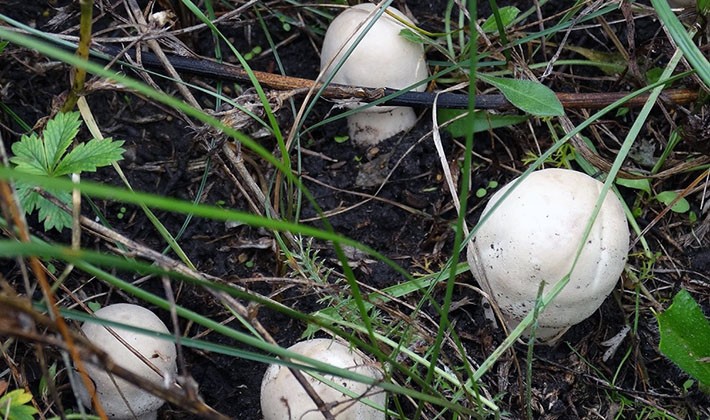
The leg of this type of champignon mushrooms is 5-9 cm tall, 0,7-2 cm thick, smooth, straight, even or slightly expanded at the base, of the same color as the cap. In the middle of the leg is a wide double white ring. The lower part of the ring has scales.
Pulp. A distinctive feature of this forest species is the white flesh that is intensely yellowing on the cut and the smell of carbolic acid or ink, especially when cooked. This smell is often called “pharmacy” or “hospital”.
The plates are whitish or pink-gray at first, then the color of coffee with milk, frequent, free. When fully ripe, the plates acquire a dark brown color with a purple tint.
Similar types. This species is dovit, so it is so important to distinguish it from edible similar species. These champignons look like edible champignons (Agaricus campester), which, with all other similar features in terms of the color of the cap, the shape of the stem and plates, is distinguished by the absence of a “pharmacy” smell or the smell of carbolic acid. In addition, in the common champignon, the pulp on the cut slowly turns red, and in the yellow-skinned, it intensively turns yellow.
These photos show what yellow-skinned champignons look like:
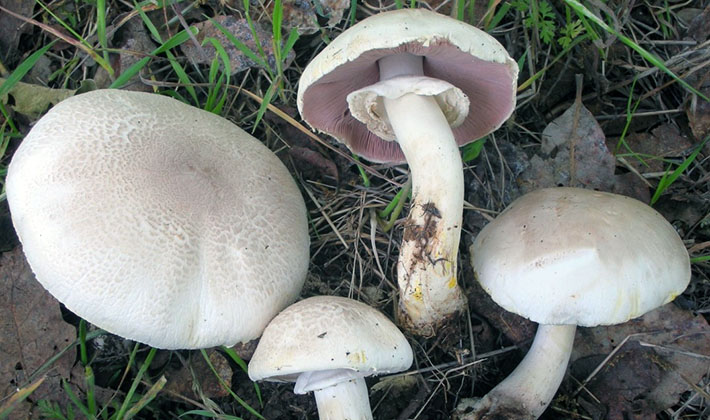
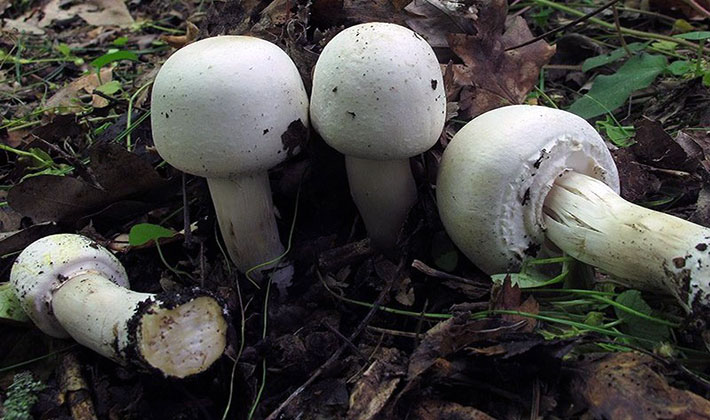
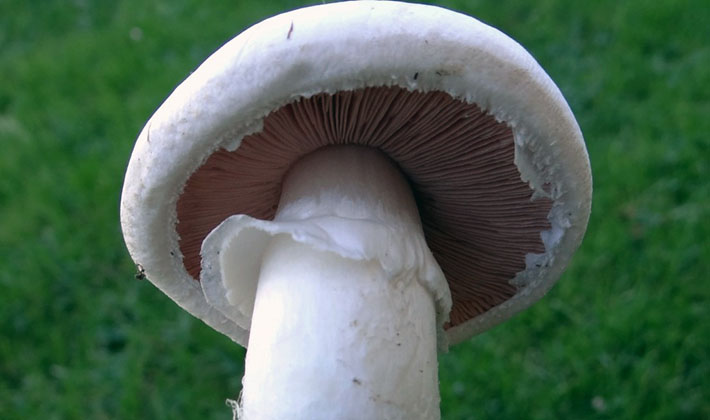
Champignon reddish
Habitats of reddish mushrooms (Agaricus semotus, f. concinna): mixed forests, in parks, meadows.
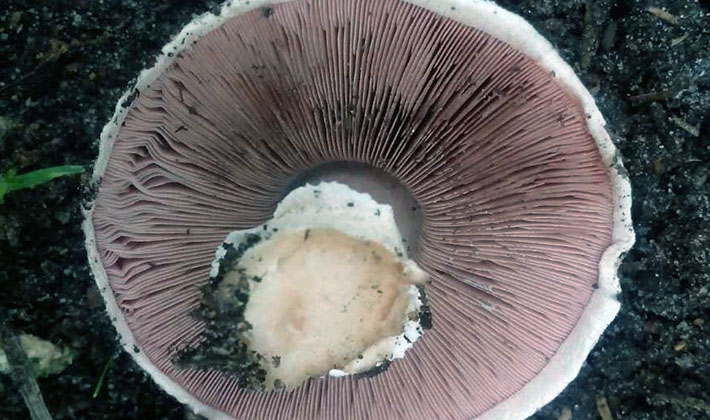
Season: July-September.
The cap is 4-10 cm in diameter, at first spherical, later convex and prostrate. A distinctive feature of the species is a whitish hat with a red or brown middle.
Leg 5-10 cm tall, 7-15 mm thick, whitish, covered with light flakes, thickened at the base, creamy pink or reddish at the base, there is a white ring on the leg. Pulp. A distinctive feature of the species is white, dense pulp with the smell of almonds, gradually turning red on the cut.
As you can see in the photo, this type of champignon has frequent plates, their color changes from pale pink to brown with a purple tint as they grow:

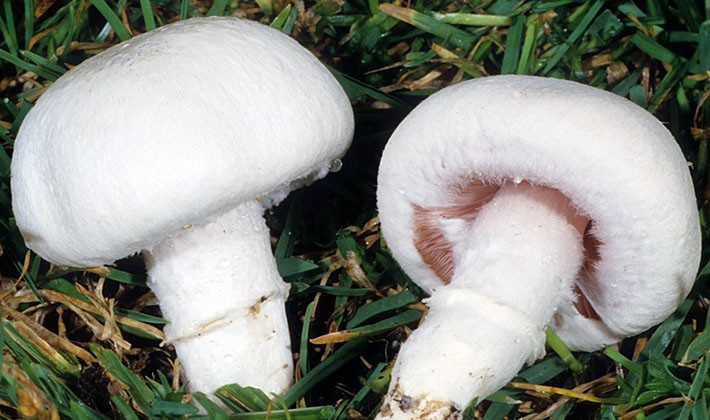
Similar types. Reddish champignon looks like an edible white or meadow umbrella mushroom (Macrolepiota excoriate), which also has a reddish-brown spot in the center of the cap, but it is located on a tubercle and there is no reddening of the stem.
Similar poisonous species. It is necessary to be especially careful when collecting this edible type of champignon, as they can be confused with the deadly poisonous bright yellow fly agaric (Amanita gemmata), which also has a white ring on the stem, but the plates are pure white and there is a swelling at the base of the stem (Volva ).
Edible, 4th category.
Cooking methods: fried, marinated.
Pink champignon
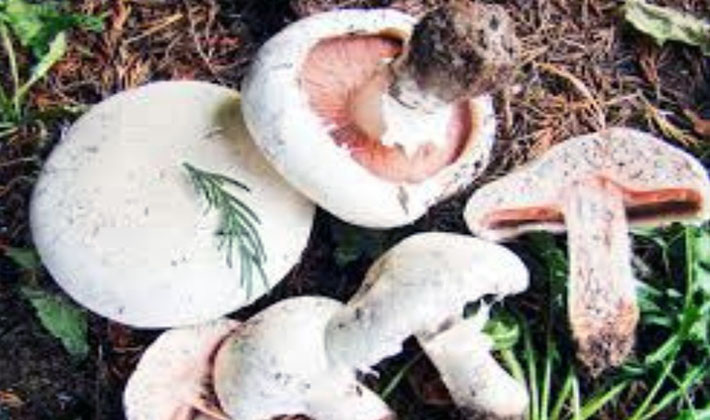
Habitats of pink champignons (Agaricus rusiophyllus): mixed forests, in parks, meadows, gardens, near dwellings.
Season: July-October.
The cap is 4-8 cm in diameter, at first spherical with incurved edges, later bell-shaped, silky or finely scaly. A distinctive feature of the species is at first a white, later a whitish-brown hat with a purple tint and pink plates. The edges often have the remains of a private bedspread.
Leg 2-7 cm high, 4-9 mm thick, smooth, hollow, with a white ring. The flesh is white at first, later yellowish. Plates are frequent at first. The second distinguishing feature of the species is at first pink, later reddish plates, even later with a purple tint.
Similar types. Graceful forest champignon is similar to edible champignon (Agaricus campester), in which the flesh slowly turns red in the cut and there is no pink color of the plates in young specimens.
Similar poisonous species. It is necessary to be especially careful when collecting elegant champignons, as they can be confused with the deadly poisonous pale grebe (Amanita phalloides), in which the plates are pure white, and in mature mushrooms they turn yellowish, there is a swelling at the base of the leg (Volva).
Edible, 4th category.
These photos show the types of champignons, the description of which is presented above:
